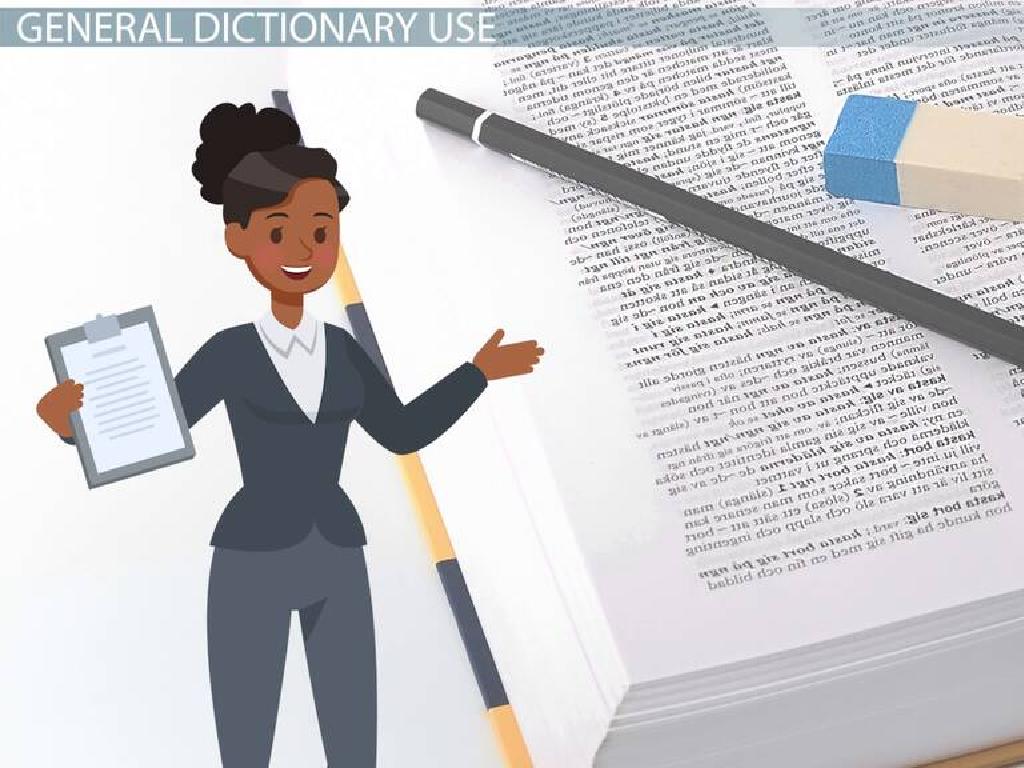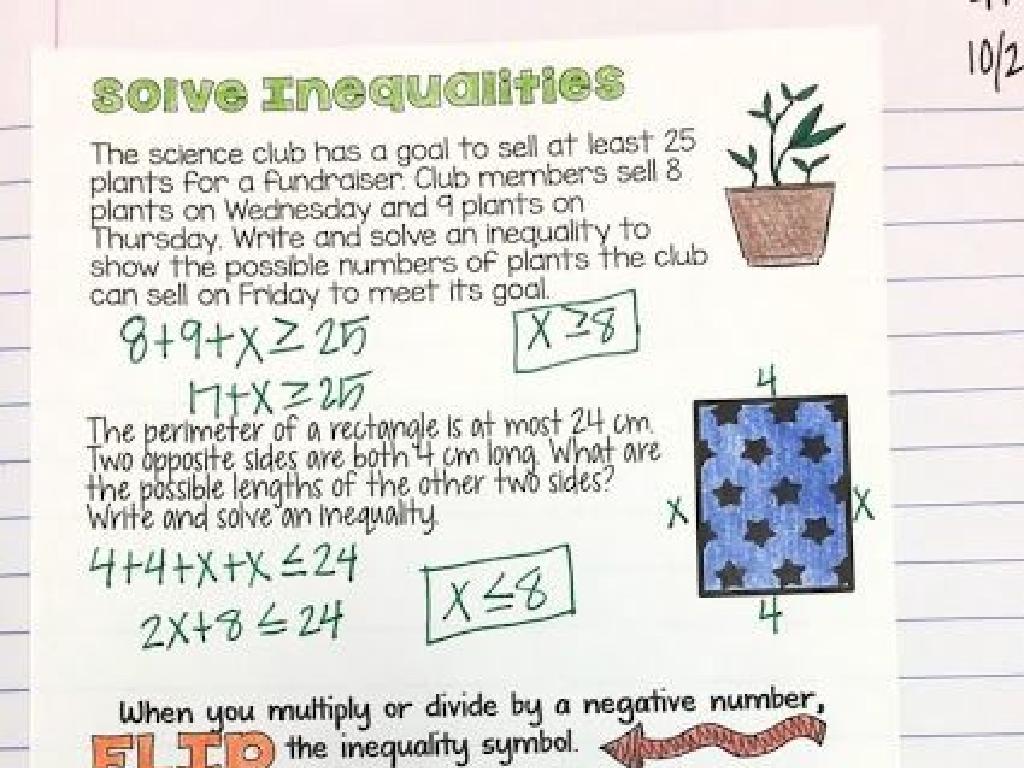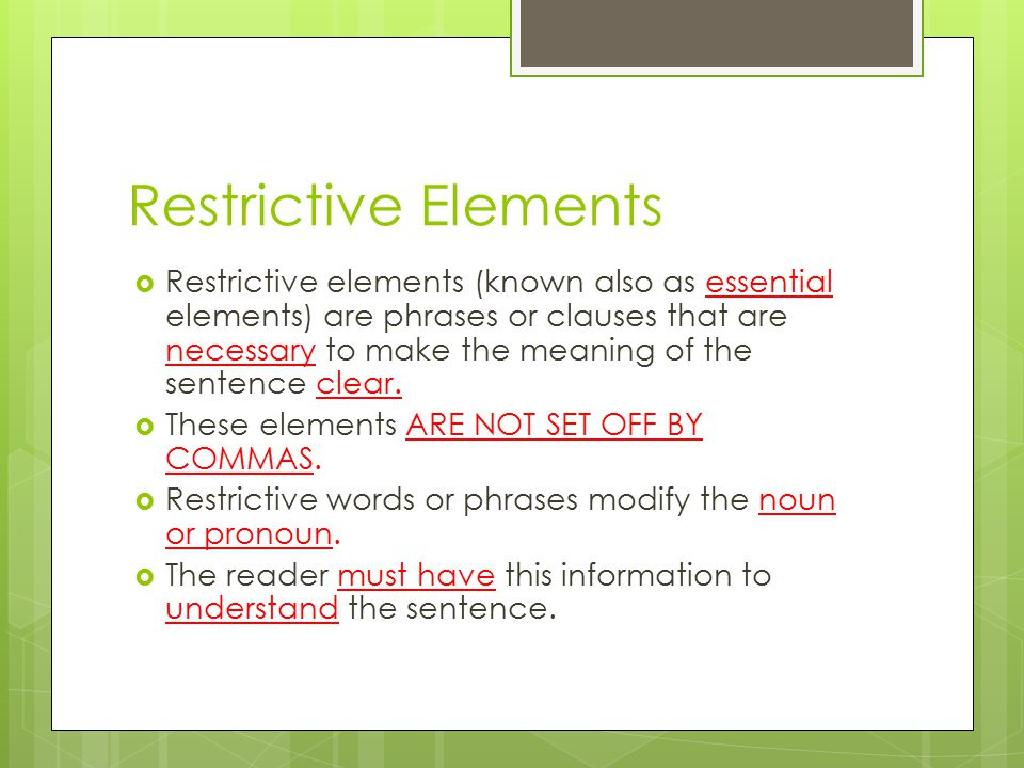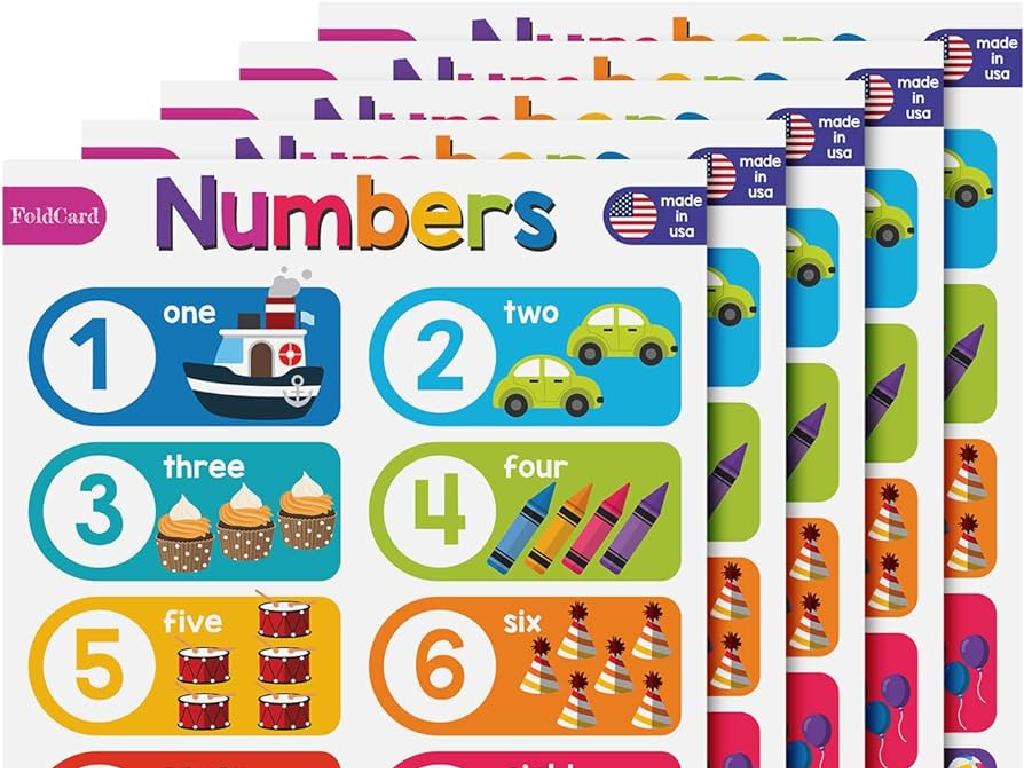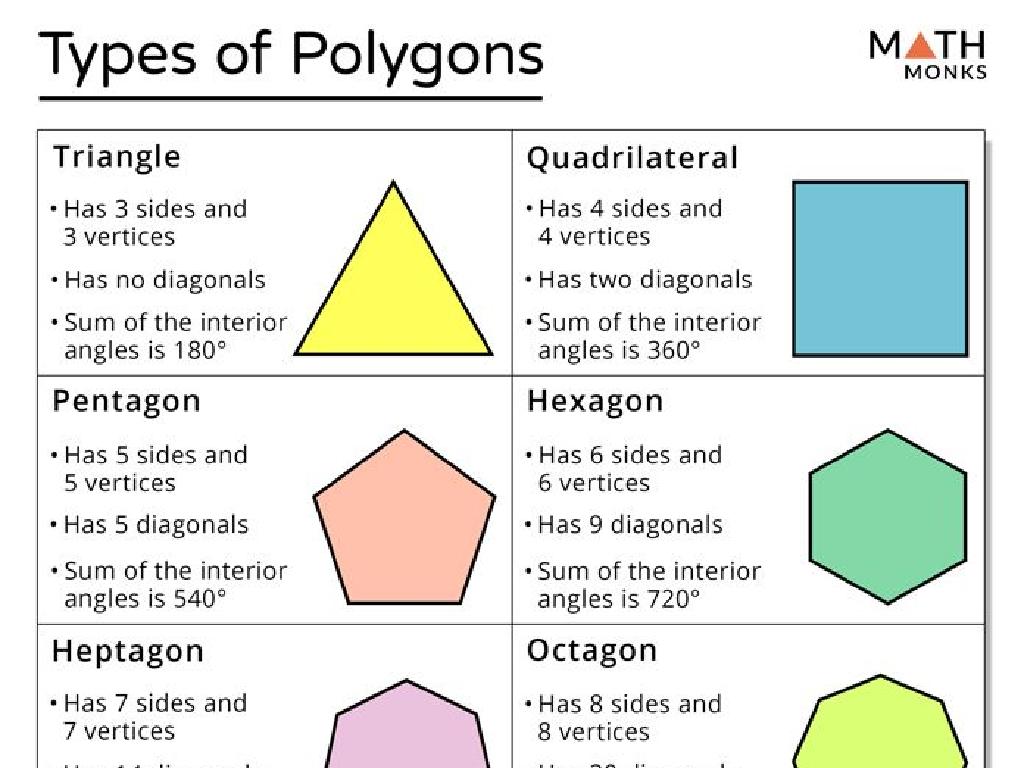Subtract 1 Or 2
Subject: Math
Grade: Kindergarten
Topic: Subtraction Up To 10
Please LOG IN to download the presentation. Access is available to registered users only.
View More Content
Welcome to Subtraction!
– Greet our little mathematicians
– Today’s lesson: Take away 1 or 2
– We’ll learn to subtract 1 or 2 from numbers up to 10
– Understand subtraction
– Subtraction means taking away from a total
– Practice with examples
– Example: If you have 4 apples and eat 1, you have 3 left
|
Begin the class with a warm greeting to make the children feel comfortable. Introduce the concept of subtraction as ‘taking away’ 1 or 2 items from a group. Use tangible examples like toys or snacks to illustrate the concept, as this will be more relatable for Kindergarten students. Demonstrate subtraction using objects they can touch and count, such as blocks or fingers, to show what happens when we take 1 or 2 away. Encourage the students to participate by asking them to subtract items from a group and tell you how many are left. This hands-on approach will help solidify their understanding of basic subtraction.
Learning Subtraction: Giving Away Apples
– What is subtraction?
– It’s when we take away from a total number
– Subtraction as sharing
– Like giving away some of your toys
– Subtracting makes numbers smaller
– If you have 3 candies and eat 1, only 2 are left
– Example with apples
– Start with 10 apples, give 1 away, count what’s left
|
This slide introduces the concept of subtraction to Kindergarten students by relating it to the idea of sharing or giving things away. Begin by asking students to visualize having a certain number of items, like apples, and then giving some away. Explain that subtraction is the process of taking away from a group, which results in a smaller number. Use concrete examples, such as sharing toys or eating candies, to illustrate the concept. For the apple example, use physical props or visual aids to show 10 apples and then remove one, asking the students to count how many are left to reinforce the concept of subtraction.
Subtracting 1: Learning to Take Away
– Start with number 2
– Imagine you have 2 candies
– Take 1 away, hop back
– If you eat 1 candy, you hop back to 1
– Number line shows 1 left
– Visualize going from 2 to 1 on a number line
– Practice with different numbers
|
This slide introduces the concept of subtraction by taking away 1 from a number. Start with the number 2 as it’s a simple and tangible example for Kindergarteners. Explain that subtracting 1 means ‘hopping back’ one space on the number line, which helps visualize the subtraction process. Use real-life examples like candies to make it relatable. After explaining with number 2, encourage the students to practice with other numbers up to 10 to solidify their understanding. The goal is to make them comfortable with the idea of ‘taking away’ and seeing the number line as a helpful tool.
Subtracting 2: Let’s Learn with Number 3!
– Starting with number 3
– Take 2 hops back on the number line
– Imagine hopping like a bunny, each hop is minus one
– We land on number 1
– After 2 hops back from 3, where do we stop?
– Now we have 1 left!
|
This slide is designed to teach Kindergarten students the concept of subtracting 2 from a number, using the number 3 as an example. Start by showing the number 3 and then visually demonstrate or have the students physically take two steps back to represent subtracting 2. Use a number line on the board or on the floor to make this concept tangible. Explain that when we take 2 away from 3, we are left with 1. Reinforce the concept by having students practice with different numbers and using physical movements to embody the subtraction. This kinesthetic approach helps young learners grasp the idea of subtraction in a fun and engaging way.
Let’s Practice Together: Subtracting 1 or 2
– Subtracting 1 from 4
4 – 1 is like having 4 apples and eating 1. How many are left?
– Subtracting 2 from 5
5 – 2 is like having 5 cookies and giving 2 away. Count what’s left!
– Use fingers for help
Hold up 4 fingers, put 1 down. Now how many fingers are up?
– Practice makes perfect!
|
This slide is an interactive activity for the students to practice subtraction by using physical objects like fingers to visualize the process. Start by demonstrating the subtraction of 1 from 4 using fingers or classroom objects. Then, move on to subtracting 2 from 5, again using a visual aid. Encourage the children to use their fingers to subtract, as this tactile method can help solidify the concept. Have the students practice several examples with different numbers, ensuring they understand the concept of taking away. The goal is to make them comfortable with basic subtraction up to 10. Remember to praise their efforts to build confidence.
Subtraction Stories: Tommy and Sally
– Tommy’s toy cars subtraction
– Tommy had 3 cars, gave 1 away, now he has 2 cars.
– Sally’s candy count subtraction
– Sally had 5 candies, ate 2, now she has 3 candies.
– Understanding ‘take away’
– Practice with real objects
– Use toys and candies to subtract.
|
This slide introduces the concept of subtraction as ‘taking away’ through simple, relatable stories. For Tommy’s story, use toy cars to visually demonstrate that when one is taken away from three, two are left. Similarly, for Sally’s story, use candies to show that eating two out of five leaves three. Encourage the students to use their fingers or classroom objects to practice this concept. The goal is to help them visualize subtraction and understand that it represents removing items from a group. Activities can include role-playing with toys, using snack time for subtraction practice, or drawing pictures to represent the stories.
Class Activity: Subtraction with Blocks
– Start with a few blocks each
– Give 1 or 2 blocks to a friend
– Count how many blocks are left
– How many blocks do you have now?
– Understand subtraction by doing
– This is how we subtract numbers!
|
This interactive activity is designed to teach Kindergarten students the concept of subtraction in a tangible and engaging way. Begin by distributing a small number of blocks to each student. Instruct them to subtract by giving away 1 or 2 blocks to a friend. After the exchange, guide the students to count their remaining blocks. This hands-on experience helps them visualize the subtraction process and understand that subtracting means taking away. For the activity, consider variations such as subtracting different numbers of blocks or using other objects to keep the activity fresh and interesting. Encourage students to articulate the subtraction process and share their results with the class to reinforce their learning.
Review and Goodbye!
– What is subtraction?
– Subtracting means ‘taking away’
– Like when we take 1 toy from 3 toys, we have 2 left
– We have fewer items after subtracting
– If we start with 5 candies and eat 2, we have 3 candies left
– Great work today, see you next time!
|
This slide is meant to wrap up the lesson on subtraction by reviewing the key points. Start by asking the students what they learned about subtraction to engage them and reinforce their understanding. Explain that subtraction is the process of taking away from a group, which results in having fewer items than we started with. Use tangible examples like toys or candies to illustrate the concept, as these are relatable items for Kindergarten students. Praise their efforts and encourage them to practice subtraction at home. Let them know you’re looking forward to seeing them in the next class, leaving the lesson on a positive note.

